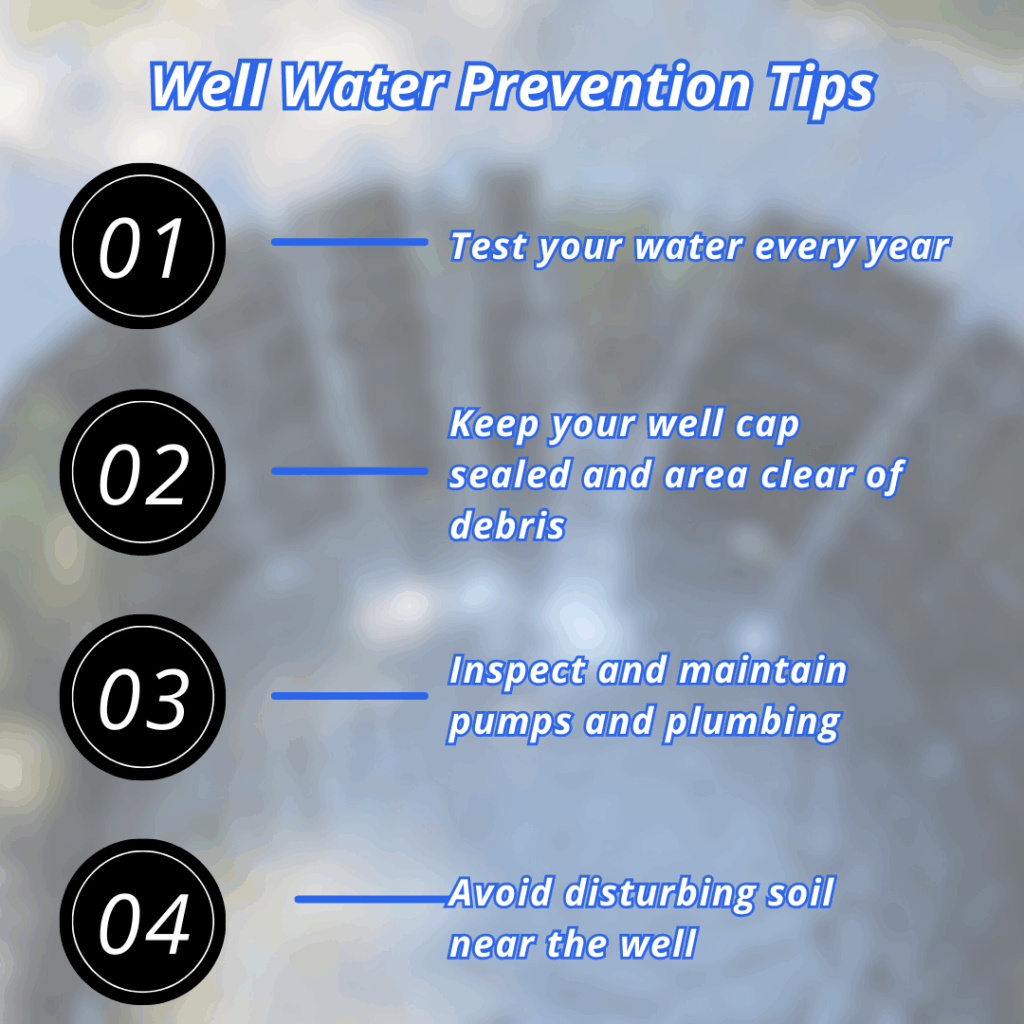If your well water has suddenly turned brown, it can be alarming. Brown water often means there is iron, sediment, organic material, or rust in your supply. Sometimes it is caused by changes in your well structure or water levels.
The safest first step is to test your water to find the exact cause. Once you know what’s behind the discoloration, you can take the right steps to restore clean, clear water.
Common Reasons Well Water Turns Brown
Brown well water is not always a sign of danger, but it is always a sign that something has changed. Here are the most common reasons this happens.
Iron or Manganese in the Water
Iron and manganese are naturally found in groundwater across central Pennsylvania. When water containing these minerals is exposed to air, the iron oxidizes and turns a rusty brown or reddish color. Manganese can give the water a brown or even black tint.
Signs to look for:
- Rusty or metallic taste
- Orange or brown stains on sinks, tubs, or laundry

Iron Bacteria
Iron bacteria feed on dissolved iron and produce a reddish-brown or yellow slime. This slime can coat pipes, stain fixtures, and give your water a musty odor. While not a health threat, it can clog plumbing and make water unpleasant to use.
Rust from Plumbing or Well Components
If your well casing, pipes, or water heater are corroding, rust particles can enter the water. This is more common in older systems or when metal parts have been exposed to oxygen and moisture over time.
Clues this is the cause:
- Sudden brown water in only one part of the home
- Visible flakes or particles in the water
Sediment or Silt Disturbance
Sediment can enter a well after heavy rain, flooding, or nearby construction. A damaged well seal or pump set too low can pull silt and sand into your water. This often makes water cloudy or brown and can wear down pumps over time.
Organic Material (Tannins)
Tannins come from decaying leaves, plants, or other organic matter in soil. They can seep into wells when surface water gets in. Tannins are harmless but can make water look like weak tea and give it an earthy taste.
Changes in Well Water Levels or Structure
Shifts in groundwater levels or damage to the well structure can stir up sediment or allow contaminants inside. This can happen during droughts, after heavy pumping, or when well parts begin to fail.
How to Find Out Why Your Well Water is Brown
Start with a professional water test. A water test measures things like iron, manganese, bacteria, tannins, and sediment. Knowing exactly what’s in your water is the only way to choose the right fix.
Enviroquest offers water testing services that give you a full picture of your water quality.
Inspect the Well and Plumbing
Look for visible rust, leaks, or pump issues. Check your well cap to make sure it is secure and free of cracks. If sediment is building up in plumbing or filters, that could point to a well seal or pump depth problem.
Solutions Based on the Cause
The right fix depends on the cause of the brown water.
- High Iron or Manganese – Use an oxidizing iron filter, water softener, or other treatment system designed for metals.
- Iron Bacteria – Shock chlorination, well cleaning, and ongoing maintenance.
- Rust from Pipes – Replace or repair damaged pipes, casings, or tanks.
- Sediment or Tannins – Install a sediment filter, repair the well seal, or adjust the pump placement.
In Cumberland and Dauphin counties, for example, older farm wells often have iron bacteria that need both disinfection and filter upgrades to keep water clear long term.
Preventing Brown Water in the Future
Regular care keeps your well water clean and reduces the chance of sudden changes.
- Test your water every year
- Keep your well cap sealed and area clear of debris
- Inspect and maintain pumps and plumbing
- Avoid disturbing soil near the well

Related Questions About Brown Well Water
Is brown well water safe to drink?
It depends on the cause. Some minerals and tannins are harmless, while bacteria or contaminants may pose risks. Testing is the only way to know.
Why does my well water smell bad and look brown?
This often points to iron bacteria, which can cause both discoloration and odor.
Can heavy rain make well water brown?
Yes. Heavy rain can wash sediment or organic matter into the well if the seal or pipes are damaged.
How long does it take to clear brown water after treatment?
This depends on the treatment type and system. Some filters work immediately, while bacteria treatments may take days to flush and drain fully.
Conclusion
Brown well water is a sign that something in your water supply or system has changed. In most cases, the problem can be solved once the cause is identified. A water test is the best way to find answers and choose the right solution.
If your well water has recently turned brown, contact Enviroquest. We can test your water, explain the results, and guide you toward a fix that keeps your water clean and safe.
